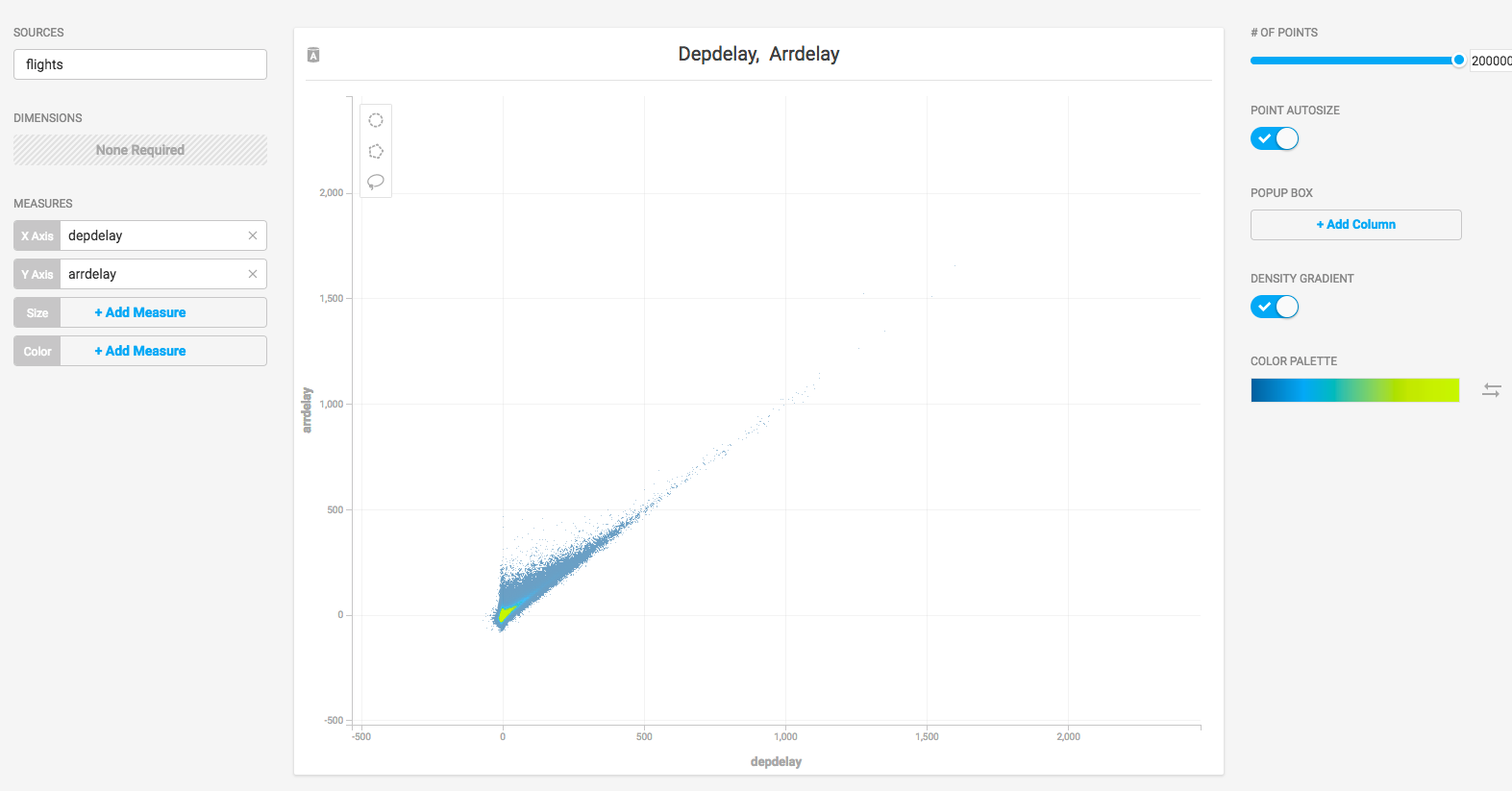Ubuntu EE CPU Installation With Tarball
| Note | MapD has been rebranded to OmniSci. |
This is an end-to-end recipe for installing OmniSci Enterprise Edition on an Ubuntu machine running without GPUs. This install has all of the functionality of OmniSci, except for backend rendering (Pointmap, Scatterplot, and other charts might not be available.)
- The installation phases are:
| Important | The order of these instructions is significant. To avoid problems, install each component in the order presented. |
Assumptions
- These instructions assume the following:
- You are installing on a “clean” Ubuntu host machine with only the operating system installed.
- Your OmniSci host only runs the daemons and services required to support OmniSci.
- Your OmniSci host is connected to the Internet.
Preparation
Prepare your Ubuntu machine by updating your system, creating the OmniSci user, and enabling a firewall.
Update and Reboot
- Update the entire system:
sudo apt update sudo apt upgrade
- Install a “headless” Java Runtime Environment:
sudo apt install default-jre-headless
- Verify that the
apt-transport-httpsutility is installed:sudo apt install apt-transport-https
- Reboot to activate the latest kernel:
sudo reboot
Create the OmniSci User
Create a group called mapd and a user named mapd, who will be the owner of the OmniSci database. You can create both the group and user with the useradd command and the -U switch.
sudo useradd -U mapd
Enable the Firewall
To use Immerse, you must prepare your host machine to accept HTTP connections. You can configure your firewall for external access.
sudo ufw disable
sudo ufw allow 9092/tcp
sudo ufw allow ssh
sudo ufw enableFor more information, see https://help.ubuntu.com/lts/serverguide/firewall.html.
Installation
You install the OmniSci application itself by expanding a TAR file.
- Download the desired version of OmniSci from the URL provided you by your Account Executive.
- Create your $MAPD_PATH directory. OmniSci recommends /opt/mapd.
- Expand the OmniSci archive file in the $MAPD_PATH directory with the following command:
sudo tar -xvf <file_name>.tar.gz
Configuration
These are the steps to prepare your OmniSci environment.
Set Environment Variables
For convenience, you can update .bashrc with the required environment variables.
- Open a terminal window.
- Enter
cd ~/to go to your home directory. - Open
.bashrcin a text editor. For example,sudo gedit .bashrc. - Edit the
.bashrcfile. Add the following export commands under “User specific aliases and functions.”# User specific aliases and functions export MAPD_USER=mapd export MAPD_GROUP=mapd export MAPD_STORAGE=/var/lib/mapd export MAPD_PATH=/opt/mapd export MAPD_LOG=/var/lib/mapd/data/mapd_log
- Save the
.bashrcfile. - Open a new terminal window to use your changes.
The $MAPD_STORAGE directory must be dedicated to OmniSci: do not set it to a directory shared by other packages.
Initialization
This step initializes the database and prepares systemd commands for OmniSci.
Run the
systemdinstaller. This script requiressudoaccess. You might be prompted for a password. Accept the values provided (based on your environment variables) or make changes as needed. The script creates a data directory in $MAPD_STORAGE with the directoriesmapd_catalogs,mapd_data, andmapd_export.mapd_importandmapd_logdirectories are created when you insert data the first time. Themapd_logdirectory is the one of most interest to a OmniSci administrator.cd $MAPD_PATH/systemd sudo ./install_mapd_systemd.sh
Activation
Start and use OmniSci Core and Immerse.
Start OmniSci Core
cd $MAPD_PATH sudo systemctl start mapd_server sudo systemctl start mapd_web_server
Enable OmniSci Core to start when the system reboots.
sudo systemctl enable mapd_server sudo systemctl enable mapd_web_server
Checkpoint
To verify that everything is working correctly, load some sample data, perform a mapdql query, and generate a pointmap using Immerse.
- OmniSci ships with two sample datasets of airline flight information collected in 2008. To install the sample data, run the following command.
cd $MAPD_PATH sudo ./insert_sample_data
- When prompted, choose whether to insert dataset 1 (7 million rows) or dataset 2 (10 thousand rows).
Enter dataset number to download, or 'q' to quit: # Dataset Rows Table Name File Name 1) Flights (2008) 7M flights_2008_7M flights_2008_7M.tar.gz 2) Flights (2008) 10k flights_2008_10k flights_2008_10k.tar.gz
- Connect to OmniSci Core by entering the following command in a terminal on the host machine (default password is HyperInteractive):
$MAPD_PATH/bin/mapdql password: ••••••••••••••••
- Enter a SQL query such as the following, based on dataset 2 above:
mapdql> SELECT origin_city AS "Origin", dest_city AS "Destination", AVG(airtime) AS "Average Airtime" FROM flights_2008_10k WHERE distance < 175 GROUP BY origin_city, dest_city; Origin|Destination|Average Airtime Austin|Houston|33.055556 Norfolk|Baltimore|36.071429 Ft. Myers|Orlando|28.666667 Orlando|Ft. Myers|32.583333 Houston|Austin|29.611111 Baltimore|Norfolk|31.714286
- Connect to Immerse using a web browser connected to your host machine on port 9092. For example,
http://omnisci.mycompany.com:9092. - Create a new dashboard and a Scatter Plot to verify that backend rendering is working.
- Click New Dashboard.
- Click Add Chart.
- Click SCATTER.
- Click Add Data Source.
- Choose the flights_2008_10k or flights_2008_7M table as the data source, depending on the dataset you selected for ingest.
- Click X Axis +Add Measure.
- Choose depdelay.
- Click Y Axis +Add Measure.
- Choose arrdelay.

